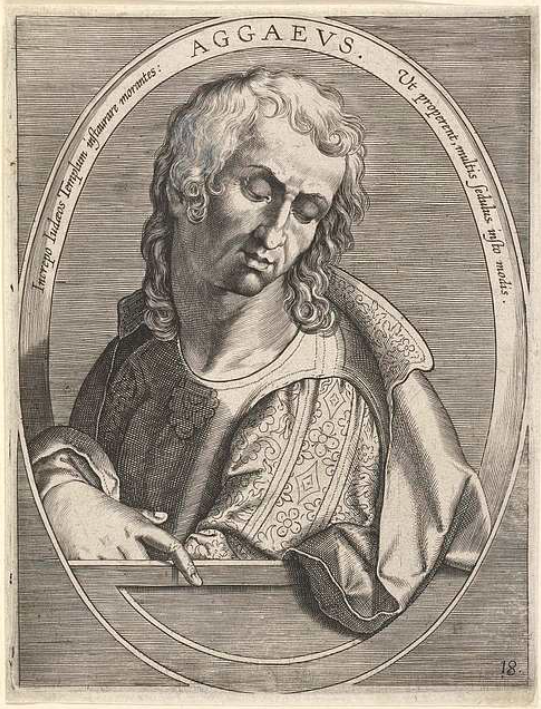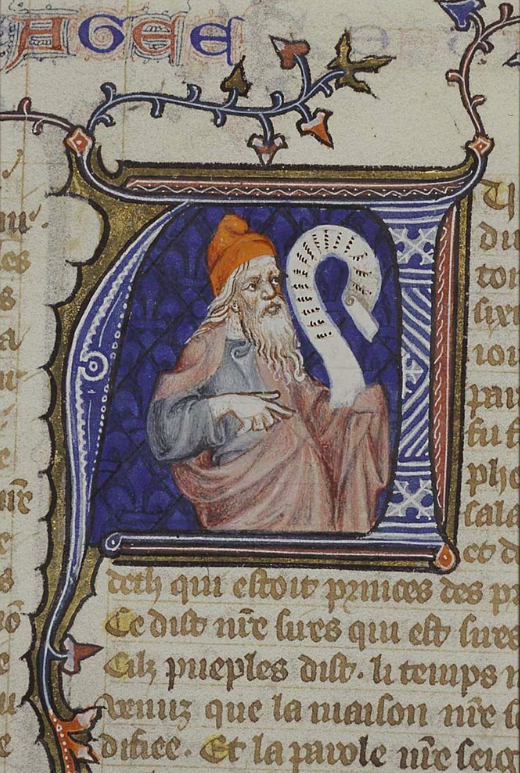A Major Minor Prophet

Saint Haggai was a Hebrew prophet working around the time that the Second Temple in Jerusalem was built, in the early 500s BC. Haggai has a book of the Bible named after him that is traditionally listed as the tenth of the twelve minor prophets included in the Old Testament.
Although St. Haggai and his story might be unfamiliar to many of us, his story and two-chapter book is certainly a major work and included in the Bible for good reason: he prophesied about the need for the people of Judah to build the Temple and to put the Lord at the center of their thoughts, words, and deeds. Luckily, the people of Judah listened to Haggai and in the physical act of rebuilding the Temple, the people he was addressing also witnessed changes in their spiritual lives and their devotion to God.
Contextually speaking, St. Haggai and his prophecies came to the Jewish people eighteen years after their return home to Jerusalem from their 70-year exile in Babylon. Although they had started to build the Second Temple and set up things like an altar and a new foundation in the new building, they soon stopped the construction, discouraged by the difficulty they encountered. However, in their disregard for the building and their faith, they also suffered many consequences. The book of Haggai tells us that there was a lack of food, drink, money, clothing, and rain (Haggai 1:6, 10).
This is what paved the way for Haggai to give them a wake-up call. He urged them to get back to work rebuilding the Temple and to give up their worship of idols. It was through these things that he said they could help restore the Kingdom of David.
The book of Haggai contains four prophecies, or oracles, that Haggai delivered over a four-month period. Throughout these pleas, Haggai encouraged the Jewish people with his promise that the coming Savior would come into this new Temple that they were to build. In this way, he helped them to live with the vision of the New Testament before them and in faith that the Lord’s coming would soon happen.

A Brief History
Although St. Haggai’s Day isn’t included in the sanctoral calendar that many of you might be familiar with—the calendar located in the beginning of the Lutheran Service Book or in the Rev. Will Weedon’s Celebrating the Saints—Lutherans have long celebrated this day.
We know this from the day’s inclusion in the Rev. Johann Konrad Wilhelm Loehe’s calendar, which dates back to the early-mid 1800s. Thus, Lutherans have celebrated Haggai on July 5th since at least the days of that calendar. This is interesting insofar as Loehe’s calendar is one of the first instances of an LCMS martyrology and a document that includes many more saints than our more modern LSB calendar provides.
With our knowledge that Loehe thought fit to include St. Haggai in his creation of a sanctoral cycle, we can see that this minor prophet is someone who can be useful to our own meditation on faith and lives of the saints.
First, St. Haggai is a reminder of the importance of the messages and Word that God sends to us. With his encouragement to the Jewish people and his continual speaking to them, they changed their ways and listened.
Second, his story is a reminder of the second coming of Christ and our preparation for Him. Just like Haggai helped the Jewish people to keep the vision of the New Testament before them, we also aim to remember Christ’s return and his promises to us.

Collect
O Almighty God, who hast knit together Thine elect in one communion and fellowship in the mystical body of Thy Son Jesus Christ, our Lord: grant us grace so to follow Thy blessed saints in all virtuous and godly living, that we may come to the unspeakable joys which Thou hast prepared for those who unfeignedly love Thee; through the same, Jesus Christ, Thy Son, our Lord, who liveth and reigneth with Thee and the Holy Ghost: ever one God, world without end. Amen.
First Reading
Gospel
Resources
Propers found in Daily Divine Service Book: A Lutheran Daily Missal, edited by the Rev. Heath Curtis
References:
1. Weedon, William. Celebrating the Saints. Concordia Publishing House. 2016.
Images:
1. Haggai, Cornelis Galle I, The Netherlands, 1613.
2. Haggai, Jean de Sy, France, 1372.
3. Nathan, Haggai, Samuel; Kirillo Belozersky; Russia; 1497.
Some links might be affiliate links which means we may receive a small commission at no extra cost to you. As an Amazon Associate we earn from qualifying purchases.


